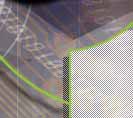
|
|||||
Curricula
Action Toolkit

a project of Media Working Group
Curricula
Activities & Experiences
Women in Science: A-Z
All Levels
Narrative
Provides an opportunity for in-depth discussion about career choices and what it takes to get from life as a student to a professional position. Also makes local contact which may help students identify better with career choices.
Objectives
Materials Needed
|
||
Guided Experience
Several web-based compilations and a few books have been made of lists of women in science. Some accounts go back to Ancient Greece, others are more contemporary. The objective is to have young women doing their own investigation and finding out, and reporting out, information on women in science. Through this exercise they develop a sense of female participation across time, particularly as it may have been omitted or minimized in formal study of history and other social studies. Mentors and teachers may make decisions about boundaries for the investigation, such as ‘Ancient Societies and women of Science’ that would include only those women prior to 800 AD in Egypt, China, Greece, Rome, Indus River Valley, Mesopotamia, Mesoamerica, etc. Another strategy would be to pursue primary sources as far as possible in this investigation. Students would then find an opportunity to display and share their information in several possible venues such as ‘A Walk Through History’ or wall and art displays or a collection bound into a book.
Each student will use the Noted Female Scientist list or create a list from the Internet to prepare a 3-5 page biography of that person. Students will share the biographies and assemble a class book of biographies. Students will view the documentary: The Gender Chip, and discuss the post viewing questions. A local Woman in the Sciences (contact a local university/ engineering or technology firm) might be invited to speak to the class about her work. Ahead of time students will prepare a list of important questions about her educational preparation and her work for the visit. The visitor will be presented with a copy of the student’s book on women in science. After the visit group discussion can reflect on points made by speaker that differ from, or add to student research.
